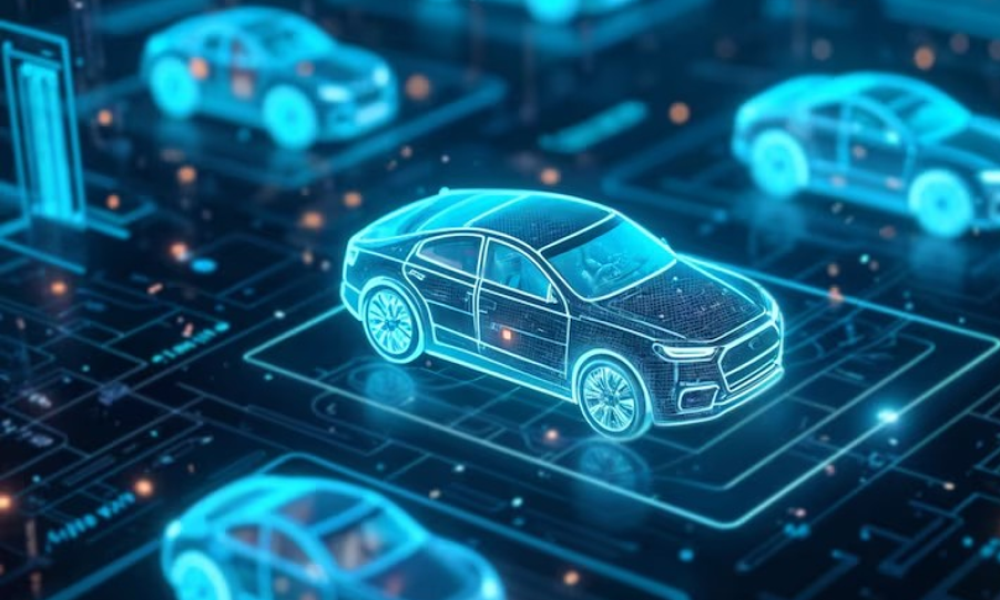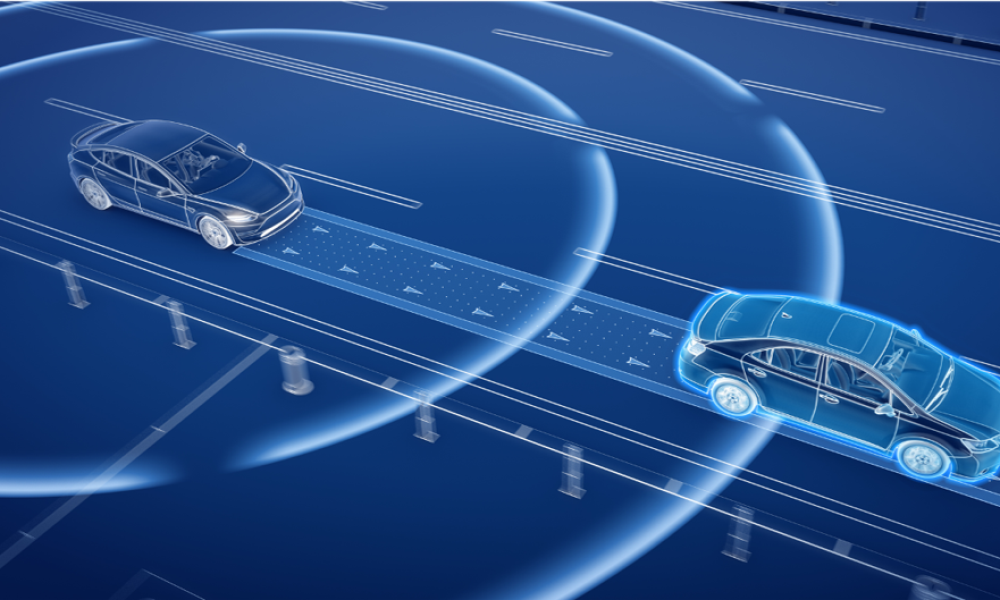The Intelligent Transport Systems sector stands at a pivotal juncture. Fuelled by rapid advancements in connectivity, artificial intelligence and sensor technologies, ITS promises a future of safer, more efficient and sustainable mobility. From optimising traffic flow and enhancing public transport to paving the way for automated vehicles and smart infrastructure, the potential benefits are transformative.
However, the journey towards this intelligent transportation ecosystem is not without its significant hurdles. This presentation delves into the top five global challenges currently confronting the ITS sector, drawing insights from national ITS organisations worldwide and highlighting the critical areas demanding focused attention and collaborative action.

1 - The Looming Shadow: Cybersecurity in an Interconnected World
The increasing interconnectedness that underpins the very essence of ITS also presents one of its most significant vulnerabilities: cybersecurity threats. As vehicles, infrastructure and control centres become more digitally integrated, they simultaneously become more susceptible to malicious attacks. The potential consequences of a successful cyber intrusion within the ITS domain are far-reaching, extending beyond mere data breaches to encompass critical safety and operational disruptions. Imagine a scenario where a malicious actor gains control over traffic signal systems, creating widespread chaos and gridlock. Or consider the implications of a cyberattack on a fleet of connected vehicles, potentially leading to the manipulation of braking systems or steering controls. The risks are not merely theoretical; as evidenced by increasing reports of cyber incidents targeting critical infrastructure globally, the threat is real and evolving.
National ITS organisations are acutely aware of this challenge. In the United States, the Department of Homeland Security and the National Highway Traffic Safety Administration (NHTSA) have issued guidelines and best practices for cybersecurity in the automotive sector. In Europe, initiatives like the European Union Agency for Cybersecurity (ENISA) are working to strengthen the resilience of transport infrastructure against cyber threats. Addressing this challenge requires a multi-faceted approach. Robust security protocols must be embedded into the design and development of all ITS components, from in-vehicle systems to roadside infrastructure and central management platforms. This includes employing encryption, intrusion detection systems and secure communication channels. Furthermore, continuous monitoring, threat intelligence sharing and rapid incident response capabilities are essential to mitigate the impact of any successful attacks.
Beyond technological solutions, fostering a culture of cybersecurity awareness across the ITS ecosystem is paramount. This involves educating stakeholders, from vehicle manufacturers and infrastructure operators to end-users, about the importance of secure practices and the potential risks involved. Collaboration between the ITS sector and cybersecurity experts is also crucial to stay ahead of evolving threats and develop effective countermeasures.

2 - The Data Deluge: Managing and Integrating the Lifeblood of ITS
Intelligent Transport Systems are inherently data driven. Sensors embedded in vehicles and infrastructure, cameras monitoring traffic flow and connected devices generating real-time information create an unprecedented deluge of data. This data holds immense potential for optimising transportation networks, improving safety and enabling innovative services. However, effectively managing, processing, analysing and integrating this vast and diverse data landscape presents a formidable challenge. The sheer volume of data generated by ITS can quickly overwhelm existing infrastructure and analytical capabilities. Moreover, the data often originates from disparate sources, utilising different formats, protocols and standards. This lack of interoperability can hinder the seamless exchange of information and prevent the realisation of a holistic view of the transportation system. Consider the challenge of integrating real-time traffic data from various equipment manufacturers and systems vendors from around the world and then try to use those with legacy installations used by highways, mass transit and municipal authorities, to provide accurate and timely information to travellers. The lack of globally standardised data formats and communication protocols can create significant bottlenecks and limit the effectiveness of such integrated systems.
National ITS organisations are actively working to address these data management and integration challenges. Initiatives focused on developing data standards, promoting data sharing agreements and establishing common platforms for data exchange are gaining traction. For instance, in Australia, Austroads is working on national specifications for data collection and sharing across different transport agencies. In Japan, the Ministry of Land, Infrastructure, Transport and Tourism (MLIT) is promoting the use of standardised data formats for various ITS applications. Overcoming this challenge requires a concerted effort involving standardisation bodies, technology providers and government agencies. Investing in robust data infrastructure, developing advanced analytics tools and establishing clear data governance frameworks are crucial steps. Furthermore, exploring the potential of technologies like data lakes and cloud computing can provide scalable solutions for managing and processing the massive datasets generated by ITS.

3 - Laying the Foundation: Bridging the Infrastructure Gap
Many of the transformative promises of ITS, particularly those related to automated vehicles and smart infrastructure, are based on the existence of a robust and technologically advanced transportation infrastructure. This includes not only well-maintained roads, but also the deployment of supporting technologies such as reliable communication networks, precise digital mapping, roadside sensors and dedicated infrastructure for electric vehicles and other sustainable mobility solutions. The current state of infrastructure readiness varies significantly across different regions and even within individual countries. While some urban centres may boast advanced traffic management systems and nascent deployments of connected infrastructure, many other areas still grapple with basic infrastructure needs. This disparity creates a significant hurdle for the widespread and equitable deployment of advanced ITS solutions. The deployment of automated vehicles, for example, requires high-definition maps with centimetre-level accuracy, reliable vehicle-to-infrastructure (V2I) communication capabilities and potentially dedicated lanes or corridors in certain environments. Additionally, the widespread adoption of electric vehicles necessitates a comprehensive charging infrastructure that is accessible and reliable.
National ITS organisations are playing a crucial role in advocating for and coordinating infrastructure investments. In Canada, Transport Canada is working with provincial and territorial governments to develop a national infrastructure strategy that supports the deployment of connected and automated vehicles. In the United Kingdom, the Department for Transport has launched initiatives to fund the development of smart infrastructure and charging networks. Addressing the infrastructure gap requires sustained and strategic investment from both public and private sectors. Governments need to prioritise transportation infrastructure upgrades and allocate funding for the deployment of ITS-enabling technologies. Collaboration with private sector partners can leverage their expertise and resources to accelerate infrastructure development. Furthermore, exploring innovative financing models and public-private partnerships can help bridge the investment gap.

4 - The Quest for Harmony: Achieving Standardisation and Interoperability
The ITS landscape is characterised by a diverse array of technologies, systems and vendors. While this innovation is a driving force behind the sector's progress, the lack of universally accepted standards and protocols can create significant challenges for interoperability. When different systems cannot communicate and work together seamlessly, the potential benefits of ITS are significantly diminished. The lack of globally harmonized communication protocol standards for V2V, V2X, and V2I technologies presents significant hurdles. These differing standards across regions create interoperability issues, preventing vehicles and infrastructure from different manufacturers or countries from communicating seamlessly. This fragmentation limits the scalability and effectiveness of these technologies, hindering their widespread deployment and public acceptance.
Without universal standards, the potential safety and efficiency benefits of connected and autonomous vehicles cannot be fully realized on a global scale. National and international standardisation bodies are actively working to address these interoperability challenges. Organisations like the International Organisation for Standardisation (ISO) and the European Telecommunications Standards Institute (ETSI) are developing standards for various aspects of ITS, including communication protocols, data formats and testing procedures. In the United States, SAE International (formerly known as the Society of Automobile Engineers) plays a key role in developing industry standards for the automotive and related sectors. Achieving true standardisation and interoperability requires a collaborative effort involving industry stakeholders, research institutions and government agencies. Promoting the adoption of open standards, developing common testing and certification procedures and fostering a culture of collaboration across the ITS ecosystem are crucial steps. Furthermore, embracing modular and open architectures in ITS system design can facilitate integration and reduce vendor lock-in.

5 - Navigating the Ethical Maze: Privacy and Societal Implications
The pervasive data collection and analysis inherent in ITS raise significant privacy and ethical concerns. The ability to track vehicle movements, monitor driver behaviour and collect personal information necessitates careful consideration of data protection and individual rights. Moreover, the deployment of advanced ITS technologies, such as automated vehicles, raises complex ethical dilemmas related to safety, liability and algorithmic bias. The collection and use of vast amounts of transportation data, while offering significant benefits for traffic management and safety, also creates opportunities for misuse and potential erosion of privacy. Ensuring the anonymity and security of personal data, establishing clear guidelines for data access and usage and providing individuals with control over their data are paramount.
The deployment of automated vehicles introduces a new set of ethical challenges. In the event of an unavoidable accident, who is held liable - the vehicle manufacturer, the software provider, or the owner? How should automated vehicles be programmed to make ethical decisions in complex situations, such as choosing between two unavoidable collisions? Addressing these ethical dilemmas requires careful consideration and the development of clear legal and regulatory frameworks.
National ITS organisations are grappling with these privacy and ethical concerns. Many are working on developing guidelines and best practices for data privacy in the transportation sector. Governments are also beginning to explore the legal and regulatory implications of automated vehicles and other advanced ITS technologies. Addressing these challenges requires a multi-disciplinary approach involving legal experts, ethicists, policymakers and technology developers. Establishing clear legal frameworks for data privacy and security, developing ethical guidelines for the design and deployment of ITS technologies and fostering public dialogue about the societal implications of intelligent transportation are crucial steps. Transparency and accountability in data handling and algorithmic decision-making are essential to build public trust and ensure the responsible development and deployment of ITS.

Charting the Course Ahead
The challenges outlined above are not insurmountable, but by acknowledging these and fostering a spirit of collaboration, innovation and proactive problem-solving, the global ITS sector can navigate these complexities and realise its full potential. National ITS organisations, acting as catalysts and conveners, have a vital role to play in driving progress in these critical areas.
Addressing cybersecurity threats, mastering data management, bridging the infrastructure gap, achieving standardisation and navigating the ethical maze are not merely technical or logistical hurdles; they are fundamental prerequisites for building a future of intelligent, safe, efficient and sustainable transportation for all.
"The journey ahead demands vigilance, collaboration and a steadfast commitment to addressing these challenges head-on".
Only then can the transformative vision of Intelligent Transport Systems be fully realised.
150x150.png)